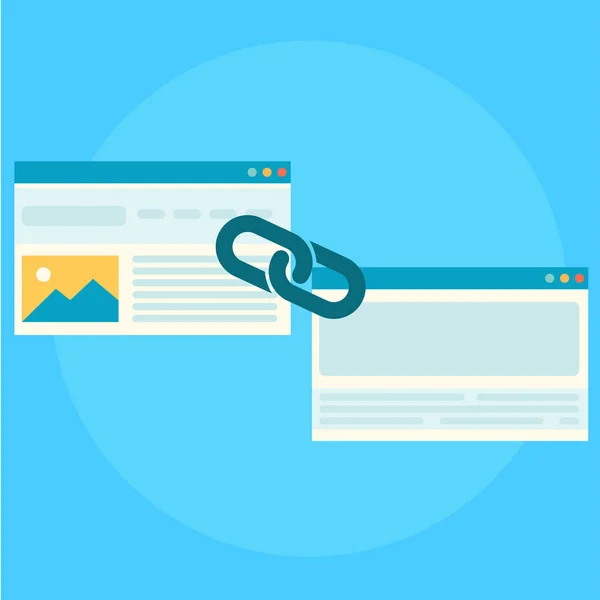In the world of SEO, many things change regularly, but one thing that remains constant is the importance of pillar pages.
A pillar page acts as a comprehensive, in-depth content on a specific topic or theme. It operates much like a hub, with multiple related pieces of content — or ‘cluster content’ — branching out from it.
Organising your content in this manner not only aids users in navigating your site and understanding the breadth of content available, but it also helps search engines decipher your site structure.
A pillar page is a content designed to rank in search engines and provide value for your visitors. This blog post will discuss why they are essential, how to create them, and some tips for ensuring they are effective.
What is a Pillar Page?
The Pillar Page is a guide that covers all aspects of a specific topic. It is the go-to resource for anyone who wants to learn about that topic.
A pillar page is a guide to a specific topic linked to a series of related content, referred to as “cluster content”.
Each piece of cluster content focuses on a particular subtopic, providing detailed insights. These clusters are typically longer than other web pages, each with its headline and supporting content. They are interconnected through hyperlinks, creating a structured network that enhances SEO visibility and ease of navigation for users.
One of the pillar page examples could be “The Complete Guide to Digital Marketing”, with cluster pages delving into subtopics like “Social Media Marketing”, “Email Marketing”, “SEO”, and so on. Each cluster page ties back to the main pillar page, forming a holistic, interlinked content ecosystem.
Pillar Pages are a highly effective way to build authority and trust with your audience. They show you are an expert on a particular topic and committed to providing comprehensive, up-to-date information.
Pillar pages rank highly for specific, long-tail keywords related to the page’s overall topic.
Why are Pillar Pages Important in SEO?
Pillar pages are essential in SEO because they help to organize your website’s content and make search engines find and index your site easily.
Second, resource pages provide a structure for your site’s internal linking, which can help improve your website’s overall link popularity.
Finally, pillar pages can serve as a foundation for content strategy, such as blog posts and infographics.
Three (3) Types of Pillar Pages
Pillar pages come in three different types, each with its own distinct purpose. Below we have ‘What is’, ‘How to’, and ‘Guide’ pillar pages.
1. The ‘What Is’
A ‘What Is’ Pillar page is designed to introduce your audience to a specific topic. This type of page provides an overview of the topic and its subtopics, with links to further reading.
By writing a comprehensive guide on a certain topic, you can attract eager audiences to learn more about it. Suppose you are an expert on something or want to teach others about a particular topic. In that case, explaining what it is in detail and providing evidence for its importance will help bring organic traffic to your site.
When you attract visitors to your site with this type of pillar page, they are more likely to convert into leads or customers.
A great ‘What Is’ Pillar page contains:
- An introduction to the topic
- A description of the topic’s key subtopics
- Links to further reading on each subtopic
2. The ‘How To’
A ‘How To’ Pillar Page is exactly what it sounds like – a resource pillar page that teaches your audience how to do something. This could be anything from ‘How to Prepare for your Child’s First Day in School to ‘How to Repair a Broken doorknob’. So instead of explaining a topic, this type of pillar page walks the reader through each step of the process.
How-to pages are some of the most popular types of content on the internet, so it’s important to make sure yours is comprehensive and easy to follow. This type of page provides step-by-step instructions for completing a task, with accompanying images or videos.
A great ‘How To’ Pillar page contains:
- Step-by-step instructions for completing a task
- Images or videos to accompany each step
- Tips and warnings throughout the instructions
3. The ‘Guide’
A ‘Guide’ Pillar page is designed to help your audience understand a process or system. This type of page provides in-depth information about a topic, including its history, components, and applications.
A guide pillar page is a comprehensive overview of a particular topic, making it an authoritative source for those who are interested to learn more about that subject. The guide pillar helps to explain the ins and outs of a topic so that your audience can be sure they are making the best decisions. It links to related cluster pages, which expand on different aspects of the topic, often related to specific keywords.
A great ‘Guide’ Pillar page contains:
- An in-depth description of the topic
- History of the topic
- Components of the topic
- Applications of the topic
What are the Topic Clusters?
Topic clusters organise and structure the content on your website around core topics. These clusters help search engines understand the relationship and hierarchy between different pages, enhancing your site’s SEO performance.
Picture a cluster like an archipelago of islands (your cluster topics) connected by bridges (hyperlinks) to a main island (your pillar content). The pillar content is the main topic, offering a broad overview and linking to cluster topics that dive deeper into specific aspects of the main topic.
The pillar page overviews the entire topic and links to the individual cluster pages. The cluster pages, in turn, link back to the pillar page. It creates a “link equity” between the pages, which can help improve the ranking of the pillar page in search engine results pages.
How to create a Pillar Page?
Pillar pages are essential to any content marketing strategy and can help you rank higher in search engines, drive more website traffic, and generate more leads.
Creating a pillar page can be daunting, but keeping a few key things in mind can make the process much easier.
1. Choose Topics
When creating a pillar page, the first step is to choose topics. Start brainstorming topics that you want to rank first.
Choose a broad topic with multiple subtopics, but not so broad. These could be product categories, service offerings, or even individual blog posts that have performed well in the past.
Develop a list of at least five relevant topics to your business or website. Once you have your list, you can start researching each topic.
Choosing topics is essential because it allows you to focus and ensure it is relevant content to your audience. It can be tempting to cover everything, but this will only result in scattered and unfocused content.
2. Do Keyword Research

One crucial step in creating a pillar page is to do keyword research.
By doing keyword research, you’ll know what keywords are ranking related to the chosen topics. It will give you an idea of your audience’s language when searching for information related to those topics.
You want to aim for keywords that are relevant to your niche and have a high search volume. Once you’ve targeted your keywords, you can begin creating pillar content for your page.
Do not forget to also look at the competition for these keywords. It will give you an idea of how difficult it will be to rank for them.
3. Make Topic Clusters

Topic clusters are a group of blog content or posts around a central pillar page content. Each piece of content in the cluster should link to the content pillar pages and vice versa. This strategy helps search engines understand the relationship between your content and can boost your ranking for related keywords.
When creating a topic cluster, start by brainstorming topics relevant to your business or industry. Then, think of subtopics or questions that fall under each main topic. These will become your cluster pages. Then, group all the subtopics or questions you found – ensure the clustering is good.
Research your list to see which are most popular with your target audience.
4. Write the Cluster Pages
Once you have your topic, it’s time to start writing the cluster pages.
Start by selecting one of your subtopics or questions within a topic cluster and create a content page around it. The content on this page should be detailed, addressing the subtopic or question comprehensively but always linking back to the broader pillar topic in some way.
Consider incorporating keywords related to the subtopic and the pillar page to maximise SEO potential. Each cluster page should contain links back to your relevant pillar and cluster pages, creating a web of interconnected content.
Strive to make each cluster page valuable and engaging to your audience, providing unique insights or solutions to their queries. Remember, the quality of your cluster pages directly impacts the effectiveness of your pillar page strategy.
5. Write the Pillar Page
With your topic and cluster pages in place, it’s time to create the pillar page. This page should act as a comprehensive overview of all the topics covered in your cluster pages, providing deeper insights into the overarching subject matter while linking back to each cluster page.
Writing the pillar page after the cluster page will help develop content that will connect all cluster pages and provide a starting point for readers who want to learn more about the topic.
It allows you to clearly understand what topics you need to cover on your site and how they all relate to each other. It is also essential to keep your Pillar Page updated as new information arises so your website visitors can always be up-to-date.
When writing the Pillar Content, it is essential to:
- Choose a title that accurately reflects the content of the page
- Write an engaging opening paragraph that will grab the reader’s attention
- Include links to all the cluster pages
- Use keyword-rich titles and descriptions for each section
- End with a call to action or summary statement
6. Optimize the Pillar Page
Your pillar page content is the main article on your website that covers a specific topic in-depth. It’s like an evergreen resource that you can continue to update and improve over time.
On-page SEO is one of a pillar page’s most important ranking factors. Make sure to optimize your pillar page for on-page SEO ranking factors.
Here are a few tips to help you optimize your pillar pages:
Use keyword-rich titles and descriptions.
Your pillar page should have a title that includes your target keywords. It will help it rank higher in search results. Make sure to include relevant keywords in the meta description and make it compelling to entice users to click through.
Structure your content
Breaking your pillar content into smaller sections makes it easier to read and navigate. Use headings and subheadings to organize your thoughts, and use bullet points or numbered lists when appropriate.
Include images and videos
Visuals such as images, videos, infographics, and charts can increase engagement and break up text-heavy content. Make sure to optimize your visuals by adding descriptive alt text and compressing images for faster loading times.
7. Add Internal Linking

When creating pillar pages, be sure to add internal linking. An internal linking strategy will help search engines understand the relationships between your pages and improve your site’s overall ranking.
Add internal links from the pillar page to cluster pages or vice versa. It will help Google understand the relationship between the pages and index them accordingly.
When you mention your pillar page on other parts of your website and link to it, it will help search engines understand about your page is about and how it fits into the rest of your site. An internal linking strategy will also help people navigate to your pillar page from other parts of your site.
8. Promote

Once you’ve created your pillar page, be sure to promote it.
There are different strategies to promote your pillar pages. With a little effort, you can get your pillar page to rank highly in search engines and attract more organic traffic. Just remember to focus on quality over quantity when promoting your page.
Link Building
Link building is perhaps an essential part of SEO strategy, and it’s something that you should focus on if you want your pillar pages to rank well in search engines. It involves getting other websites to link back to your pillar page.
If you want to promote your pillar pages, the best way is through guest blogging or writing blog posts. It involves doing write-ups or writing articles for other blogs in your industry that link back to your pillar page. External links not only help to build links and increase traffic, but it also helps to position you as an expert in your field.
Social Media
You can also promote your pillar pages through social media. It boosts your brand and reaches a larger audience at the same time. Use hashtags and post engaging visuals to get people’s attention and encourage others to share it as well. Make sure to target your ad people who are interested in the topic of your pillar page.
Conclusion
Pillar pages are a great way to attract traffic and improve your website’s SEO strategy.
Your pillar page should be comprehensive and cover all aspects of the topic. It should be well-researched and well-written, providing value to the reader. Include keyword-rich titles, descriptions, and internal links to your other content.
You can create high-quality content for the pillar page to help your business succeed by following the tips above.









